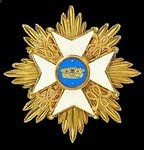First raised 16th October 1745 by Alexandre Magallon de la Morlière as a result of the increasing demand for light troops in the War of the Austrian Succession. Initially 1000 strong, consisting of 700 infantry and 300 dragoons. There were 2 grenadier companies (each 50 strong), 6 fusilier companies (each 100 strong) and 6 dragoon companies (each 50 men). The infantry formed one battalion, the dragoons 2 squadrons. The dragoons had 2 cannon a la Suédoise.
On December 1st 1746 the strength was increased to 1500 men including 500 dragoons. The extra 500 men included 3 companies of 100 fusiliers each and 4 companies of 50 dragoons each. The corps now consisted of 2 battalions and 4 squadrons.
On September 1st 1748 the corps was reduced to 980 men, viz. 2 companies of grenadiers (50 men each), 7 fusilier companies (80 men each) and 8 dragoon companies (40 dragoons each). On October 10th the corps was further reduced to a total of 640 men and then on December 1st to 340 men.
On August 1st 1749 all three corps, the Grassins, Volontaires de Breton and the Fusiliers de la Morlière, were combined to create the Volontaires de Flandres.
Brigaded with the Arquebusiers de Grassin in the War of the Austrian Succession.
Campaigns and battles:
Conquest of Dutch Flanders 1746
Battle of Lauffeldt 1747
Siege of Maastricht 1748
And this was the fusilier uniform of an officer with its silver lace and hussar-style mirliton (other ranks had the epaulettes and brandenbourgs in the same garance as the cuffs, collar, waistcoat, breeches and turnbacks):
Uniform of fusilier:
Uniform of a dragoon:























